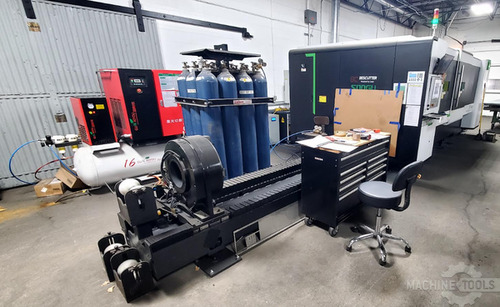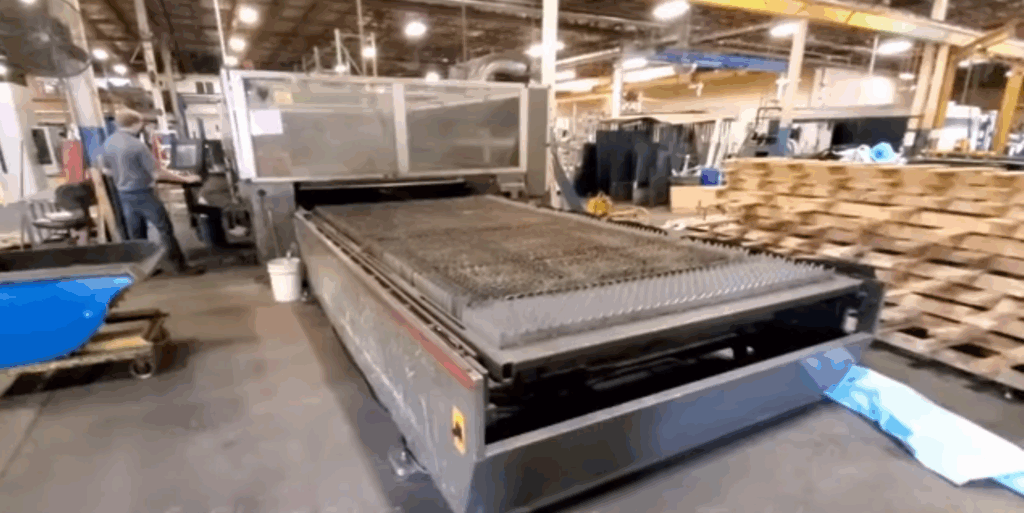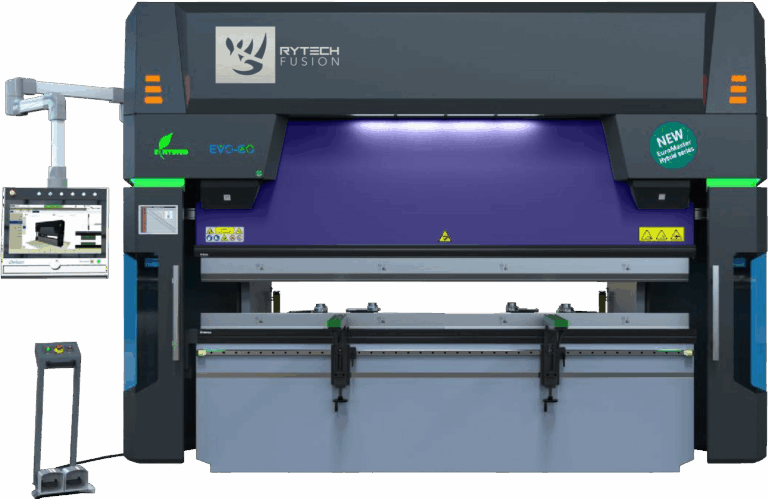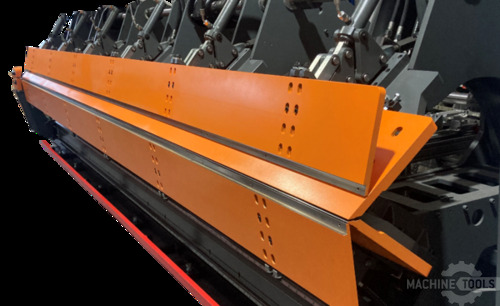From my early days growing up in southern Chicago’s industrial neighborhoods, I learned that the key to success in metal fabrication is grounded in listening—truly listening—to what customers need. Over decades in this industry, I’ve had the privilege of helping hundreds of roofing and fabrication businesses modernize their operations. Now, as Regional Sales Executive at Mac-Tech, I leverage that hands-on experience to guide clients through the complexities of upgrading to next-generation coil-to-laser systems and beyond. Whether you’re evaluating folders, shears, slitters, decoilers, downspout roll formers, or panel benders, my team and I are here to ensure your investment delivers lasting value, efficiency, and peace of mind.
Leveraging Decades of Experience: The Value of Expert Guidance in Coil-Fed Metal Fabrication
The leap to coil-fed automation is significant, and the choices can be overwhelming. That’s why our process always starts with a conversation. By understanding your current challenges—be it bottlenecked slitting, excessive scrap, or labor shortages—we can map out the best-fit solutions. I’ve seen firsthand how integrating decoilers, flatteners, and laser cutters into a seamless coil-to-laser system transforms productivity, but no two shops are identical. My job is to help you navigate the technical and operational trade-offs, drawing on both manufacturer data and real-world installations across North America.
Evaluating Current Production: Identifying Inefficiencies and Scrap Sources
Before recommending any upgrade, we conduct a deep dive into your existing line. Where is scrap being generated—at the shear, during manual handling, or from inconsistent feeding? Are multiple setups slowing throughput? Too often, I see valuable coil stock wasted due to outdated flatteners or imprecise feeding. By benchmarking your actual material yield and downtime, we can quantify the cost of inefficiency and set clear improvement targets.
Upgrading to Coil-to-Laser Systems: Key Considerations for Maximum Throughput
A successful coil-to-laser upgrade hinges on more than just machine specs. We look at your coil sizes, material types, and cut patterns to ensure the decoiler, straightener, and laser are perfectly matched. Automation is critical: servo-driven feed tables, automated nesting, and real-time scrap tracking all contribute to higher output and lower labor costs. We guide you through machine comparisons—hydraulic vs. servo folders, combi-beam vs. double folder—so you get the right configuration for your mix of jobs, whether it’s architectural panels, custom flashing, or high-volume trim.
Meeting Slitting, Forming, and Folding Demands with Precision Automation
Today’s coil-to-laser systems don’t just cut—they can slit, form, and fold with tight tolerances and minimal operator intervention. For example, automated slitters paired with coil-fed folders enable you to process multiple profiles from a single coil, reducing changeover time and material waste. Advanced panel benders and downspout roll formers can be integrated for a true “lights-out” fabrication cell. We help you balance flexibility and speed, ensuring your line can handle both standard runs and custom orders with equal efficiency.
Minimizing Scrap: Proven Strategies from Real-World Installations
Scrap reduction is where coil-to-laser automation truly shines. By optimizing nesting with software and feeding material directly from coil, you eliminate the offcuts and handling damage common with sheet-fed processes. In one recent installation for a Midwest roofing supplier, we saw scrap rates drop by over 30%—that’s real money back in your pocket. Closed-loop feedback systems, inline quality checks, and predictive maintenance further cut waste and protect your bottom line.
Enhancing Production Speed Without Compromising Quality
Throughput is only valuable if quality remains high. Modern coil-to-laser setups use servo control and precision flatteners to maintain consistent tension and flatness, even at higher feed rates. Automated stacking and part sorting keep output flowing without jams or misfeeds. The result? Faster turnaround, tighter tolerances, and fewer reworks. We often see customers double their output while maintaining or even improving finished part quality.
BESCUTTER FLY PRO 3015
CINCINNATI CL840
Tailoring Solutions: Addressing Unique Roll Forming and Fabrication Challenges
No two shops have the same requirements. Some need ultra-fast changeovers for short runs; others prioritize heavy-gauge capability or integration with downstream folding and welding. My role is to customize solutions—modular decoilers, hybrid folders, or specialty slitting heads—to fit your unique mix of products and order sizes. We provide honest advice on what’s possible, what’s practical, and what will deliver the best ROI for your operation.
Return on Investment: Measuring the Impact of Advanced Coil-Fed Technology
Every upgrade must pay for itself. We work with you to model projected savings from reduced scrap, lower labor hours, and increased throughput. For many clients, the payback period is 18–36 months, with ongoing savings for years to come. We can provide case studies and even connect you with reference sites to see the results firsthand.
Partnering for Success: Ongoing Support and Continuous Improvement
Investing in coil-to-laser automation is just the beginning. Our partnership extends through installation, training, preventive maintenance, and beyond. Mac-Tech’s national service network ensures you’re never left waiting for help, while regular check-ins and remote diagnostics keep your line running at peak performance. Your success is our success, and we’re committed to continuous improvement—helping you adapt as markets, materials, and technologies evolve.
Frequently Asked Questions
When is the right time to upgrade a roll former or folder?
If you’re seeing increased downtime, excessive scrap, or struggling to keep up with demand, it’s time to evaluate your equipment. I recommend a thorough cost-benefit analysis—sometimes upgrading sooner saves more in the long run, especially with today’s labor market and material costs.
How do servo-driven folders compare to hydraulic systems?
Servo-driven folders offer faster cycle times, greater precision, and lower maintenance. They’re ideal for shops needing high throughput or tight tolerances. Hydraulics still have their place for heavy-gauge work, but servos are quickly becoming the industry standard for most applications.
What’s the difference between a combi-beam and a double folder?
A combi-beam folder combines up-and-down bending in a single tool, allowing more complex profiles without manual intervention. Double folders have two separate beams for even faster processing of symmetrical parts. Your part mix and batch sizes will determine which is best for you.
What are signs a roll forming line is no longer cost-effective?
Frequent repairs, excessive scrap, slow changeovers, and high labor costs are all red flags. If you’re losing jobs to faster competitors or struggling to meet quality standards, it’s time to look at an upgrade.
Can coil-to-laser systems be integrated with existing equipment?
Absolutely. Many of our customers phase in new coil-fed systems alongside existing lines. We can design integrations that maximize your current investment while preparing you for future growth.
How do you ensure a smooth transition during an upgrade?
We provide detailed project planning, operator training, and on-site support before, during, and after installation. Our goal is zero disruption to your production schedule.
Ready to see what coil-to-laser automation can do for your business? Whether you’re just starting to explore options or need a detailed upgrade plan, I’m here to help. Let’s schedule a walkthrough, demo, or review your production data together. Reach out anytime at pat@mac-tech.com or 414-232-7929—or fill out the form below and I’ll be in touch personally.
Get Weekly Mac-Tech News & Updates








